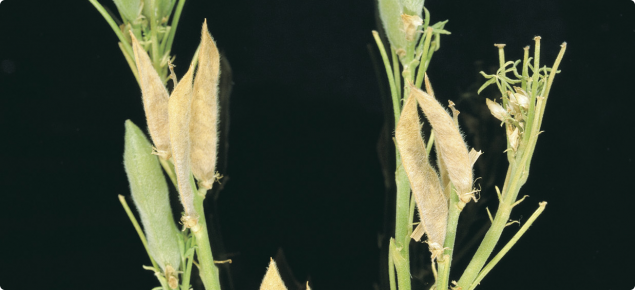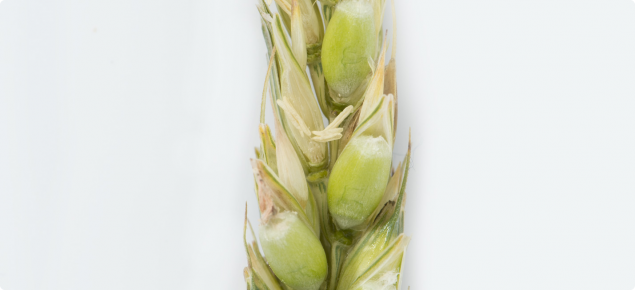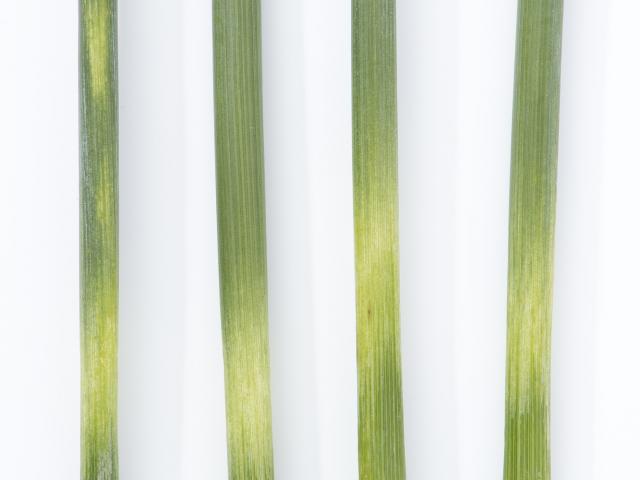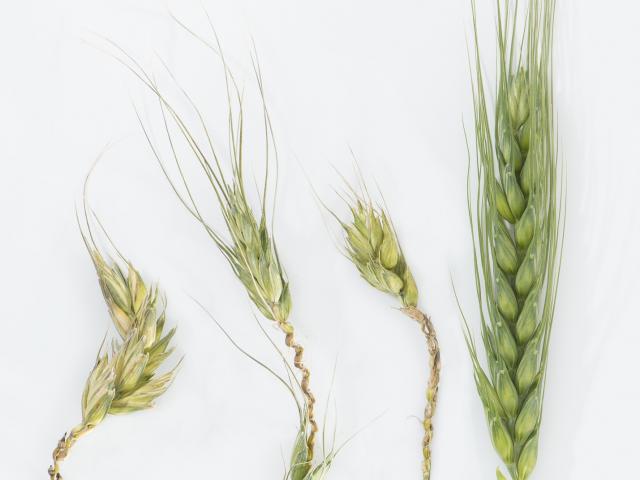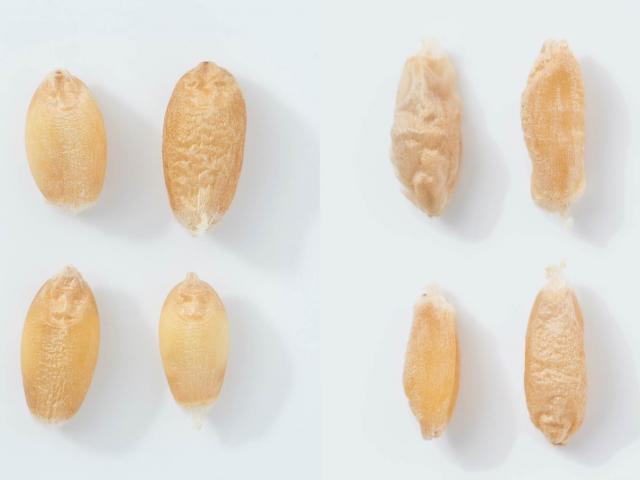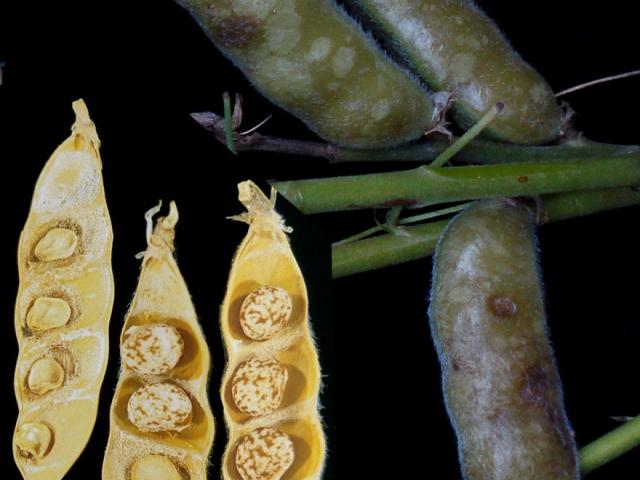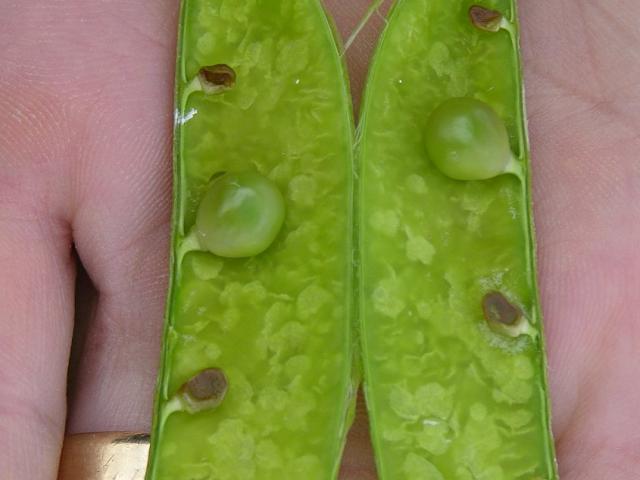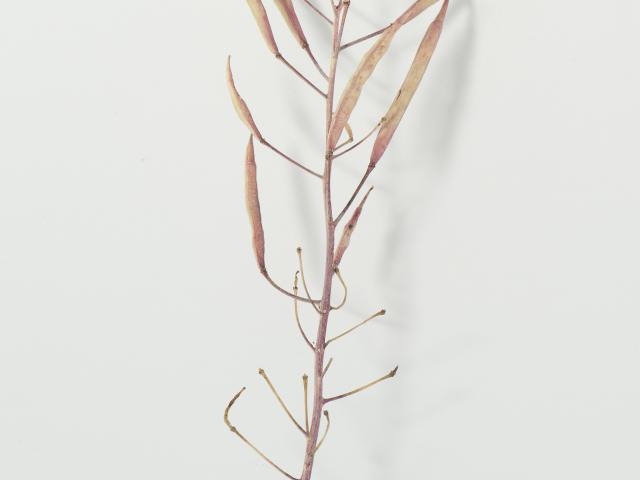Assessing frost damage
It is difficult to accurately assess the amount of frost damage in a crop because of its patchy nature and the difficulty in predicting compensation that may occur during grain-filling.
If the crop was sown early and is frosted during late August or early September, there is a good chance it will develop new tillers from its base. These may set some grain, particularly if the weather is mild and wet. In additiona the unaffected grains tend to fill to a larger size than normal because of the reduced number of grains. Mowing or harrowing to remove the damaged stems and promote growth generally reduces the final yield.
Key points for frost assessment
- Inspect crops when they are between ear-emergence and grain-filling, and when temperatures fall below 2°C at your nearest weather station.
- Examine the crop in the lower parts of the landscape, particularly light textured soils first and if damaged proceed to higher ground
- Walk through the crop and examine a whole plant every 10-20 paces.
- Inspect for damage: If the head has not emerged from the boot, check that stem and developing head has not been damaged, if the head has emerged, open the florets to check that the grain is developing.
- Tag a few heads with plastic tape and note the stage of grain fill. Return a week later to determine if grain filling is continuing.
- If the damage is very severe (eight or more heads killed out of 10) and a market for hay can be found, consider cutting the crop for hay. Do this as soon as possible after the frost so that the risk of microbial infection and loss of hay quality is small.
- If damage is not severe, yield losses may not be as great as first estimated, because of the compensation during grain filling. Monitor grain filling over the next 3-4 weeks.
Diagnosing frost in cereals
A new guide has been published to assist cereal growers to identify frost damage and consider crop management decisions. Download from here or the link in the right menu
General symptoms
Frost damage is affected by many factors and depending on the particular situation symptoms may vary widely. Crops tend to be damaged unevenly and not all plants will show obvious symptoms.
When plant tissue is frozen, ice crystals rupture the cell walls and membranes. Alternatively the cells freeze without structural damage, but the cells can be killed by dehydration. When frozen tissues thaw they take on a dark, limp and water-soaked appearance, similar to frozen lettuce. Several days after the frost, the tissue starts to dry out and turns straw-brown prematurely.
Frosted plants remain high in sugars and nutrients because they have no grain to fill. As a result they are often infected by microbes, which can turn the crop black or brown.
Stem damage
Freezing damage to the stem can occur any time from stem elongation through to mid grain filling. One of the most characteristic symptoms of frost injury is the shrunken, distorted or blistered sections on the stem between nodes before heading or the 'white ring' seen on the peduncle (the stem above the highest node and below the ear). Freezing sometimes starts in the water that sits around the collar of the flag leaf, near the stem. For several days after the frost, the ring is pale-green rather than white. Stems can be damaged just above the nodes and this is usually seen as blistering, cracking or shrivelling. Peduncles damaged just above the highest node can be pulled out from the plant by the head more easily than normal stems.
Nodes themselves, can also be damaged. When nodes or stems are affected on one side, their subsequent growth can be distorted, causing the stem to bend or twist.
Stem damage may not completely disrupt flowering and grain filling. However, the stem is weakened at the point where it was frozen and if the crop is subjected to strong winds it may fall over and make harvesting difficult.
Head damage
The most visible type of head damage is the shrivelling, bleaching or dwarfing of florets.
If the head is partially emerged during the frost, part or all of the whole head may be blighted. Whether the tip, middle or base of the head is damaged depends on how far the head was emerged from the boot during the frost. Blighting usually affects only a small proportion of the heads and other head damage is much less conspicuous. The reproductive parts of the floret (the anthers and undeveloped grain) are the most susceptible. These are frequently frozen without any obvious external symptoms.
Damage can sometimes be gauged soon after the frost by looking at the crop into the sun. The frozen heads appear more translucent than normal and the glumes and awns are spread out like a fan. Several days after the frost, the colour of damaged heads begins to fade and several weeks later, the affected parts of the crop are easily recognised as lighter areas.
The only way to examine the reproductive parts of the head is to peel back the glume of an individual floret. A magnifying glass can help when inspecting the reproductive parts.
A normal undeveloped grain is white and it feels crisp when removed from the floret and squeezed between the forefinger and thumb. Damaged undeveloped grains appear dark green or brown, partially translucent and they feel spongy.
Frost damage to anthers is difficult to recognise. Anthers normally change from pale-green to bright yellow before they are expelled from the floret. They normally become pale-yellow or white a day or so after flowering. Not all anthers are expelled from the floret at flowering.
Frost damage during grain filling can cause grain shrivelling.
For more information refer to Diagnosing stem and head frost damage in cereals.
Other similar symptoms
Similar symptoms can result from causes other than frost:
Stem and head distortions can be caused by the ill timed use of hormonal herbicides. Check your spray records.
Copper deficiency causes grain infertility. In contrast to the sporadic nature of frost damage, copper deficiency affects all heads in the crop. Have the crop tissue tested if the copper status of the paddock is unknown.
Drought and hot dry winds can cause blighting at the tips of heads. Frost will damage different parts of the heads, not just at the tip.
Diagnosing frost in canola and pulses
A new guide has been published to assist growers to identify frost damage and consider crop management decisions. Download from here or the link in the right menu
To diagnose frost damage in pulse and canola crops, inspect between bud formation and during pod growth if night air temperature (recorded 1.2m above ground) falls below 2°C and there was a frost. Check low-lying, light-coloured soil types and known frost-prone areas first. Then check other areas. Symptoms may not be obvious for five to seven days after the frost.
Identifying frost damage
To identify frost damage, peel open flowers and pods on plants to clearly see affected parts. A magnifying glass and fine tweezers or a needle can be useful. Pulse and canola crops are most susceptible to frost damage around early flowering to late pod growth and seed fill.
- Buds, flowers, pods and seeds can all be affected by frost. In some circumstances all of these parts may be affected on a single plant, as the stages coincide with a damaging frost.
- Time of flowering affects susceptibility and the ability to compensate after the frost has occurred.
- For example, chickpeas often lose early flowers to frost but can continue flowering as long as water is available, thus compensating for the loss of early flowers.
- Canola flowers for a 30–40 day period, so compensatory growth can sometimes occur. A series of consecutive frosts can result in a forced delay of pod set, leading to poor seed fill, especially if a dry finish occurs.
- Monitor pod development and seed fill by tagging some reference plants and checking them a few days later for development or senescence (dying).
Lupins
Lupins have a very susceptible to frost and are generally unable to compensate after flowering.
- In the vegetative phase, leaves are scorched and withered and stems may be scorched (sometimes with brown discolouration).
- Flowers and developing seeds in pods are shrivelled or killed completely.
- It is often difficult to detect external pod damage.
For more information refer to Diagnosing frost in narrow-leafed lupins.
Faba beans
Faba beans have a medium susceptibility to frost due to thick pod walls, which provide insulation to the developing seeds.
- Growing points are sometimes distorted (bent) during early vegetative and flowering stages. This weakens the cells of the stem, allowing disease such as chocolate spot to invade easily.
- Flowers are killed by frost, leaving the flower stalk.
- White/green mottling and blistering of pods.
- Developing seeds in the pod are shrivelled or absent.
- Affected pods feel spongy and the seeds inside turn dark black.
Field peas
Field peas are very susceptible to frost due to thin pod walls and exposure of pods to the atmosphere.
- Flowers are killed by frost.
- Developing seeds in the pod are shrivelled or absent.
- White/green mottling and blistering of pods.
- Affected pods feel spongy and the seeds inside turn dark black.
For more information refer to Diagnosing frost in field peas.
Chickpeas
Chickpeas are very susceptible to frost due to the exposed nature of the flowers.
- Leaf margins are bleached.
- Flowers are killed.
- Growing points are sometimes distorted (bent) during early vegetative and flowering stages.
- Pods may develop, but seeds abort.
- Even after a frost, chickpeas will continue to flower and set pods well into spring.
Lentils
Lentils are susceptible to frost injury at flowering due to the exposed nature of the flowers and the small size of pods.
- Flowers are sometimes killed.
- Pods may develop, but seeds abort.
- Whole pods can be killed.
Canola
Canola is most susceptible to frost damage from flowering to the clear watery stage (approximately 60% moisture).
- Yellow green discolouration of pods.
- Scarring of external pod surfaces.
- Abortion of flowers.
- Shrivelling of pods.
- Pods eventually drop off.
- Shrivelling and absence of seeds.
- Canola flowers for a 30–40 day period, allowing pod set to continue after a frost. Open flowers are most susceptible to frost damage, pods and unopened buds usually escape. If seed moisture content is less than 40% when frost occurs, oil quality will not be affected.
For more information refer to Diagnosing frost damage in canola.

